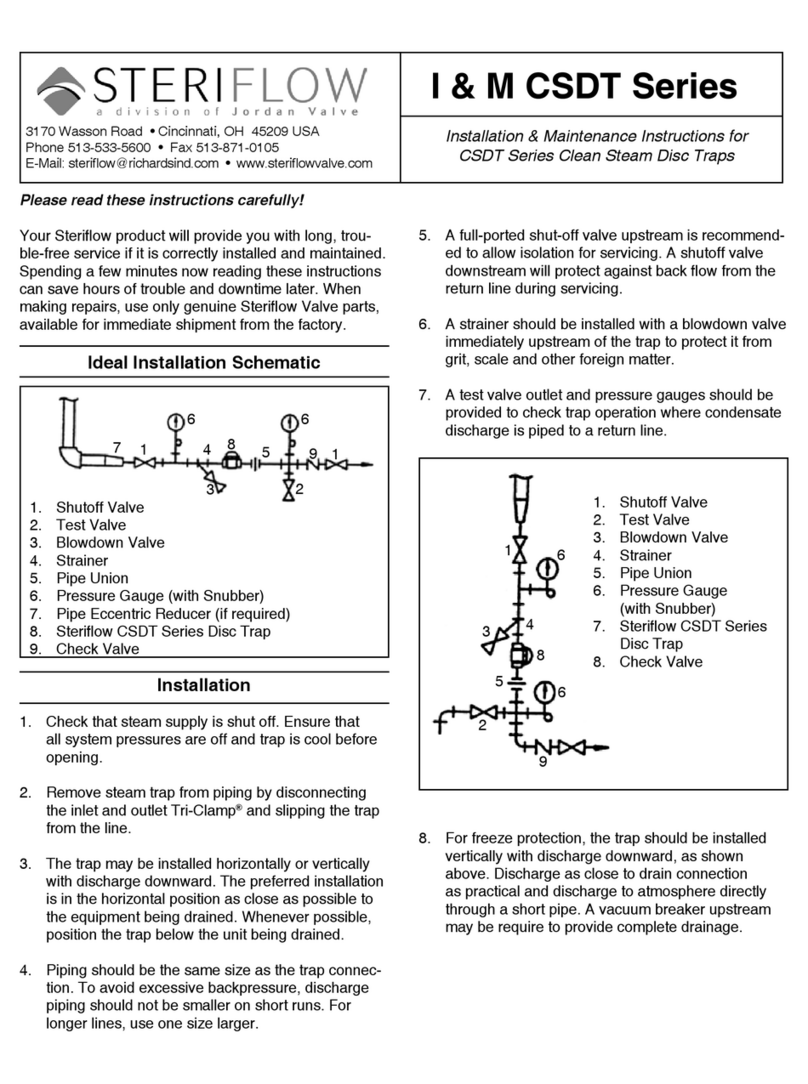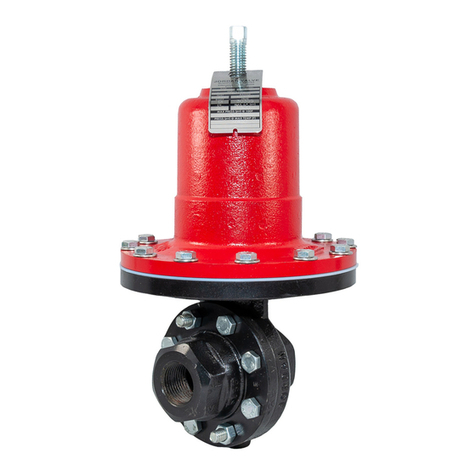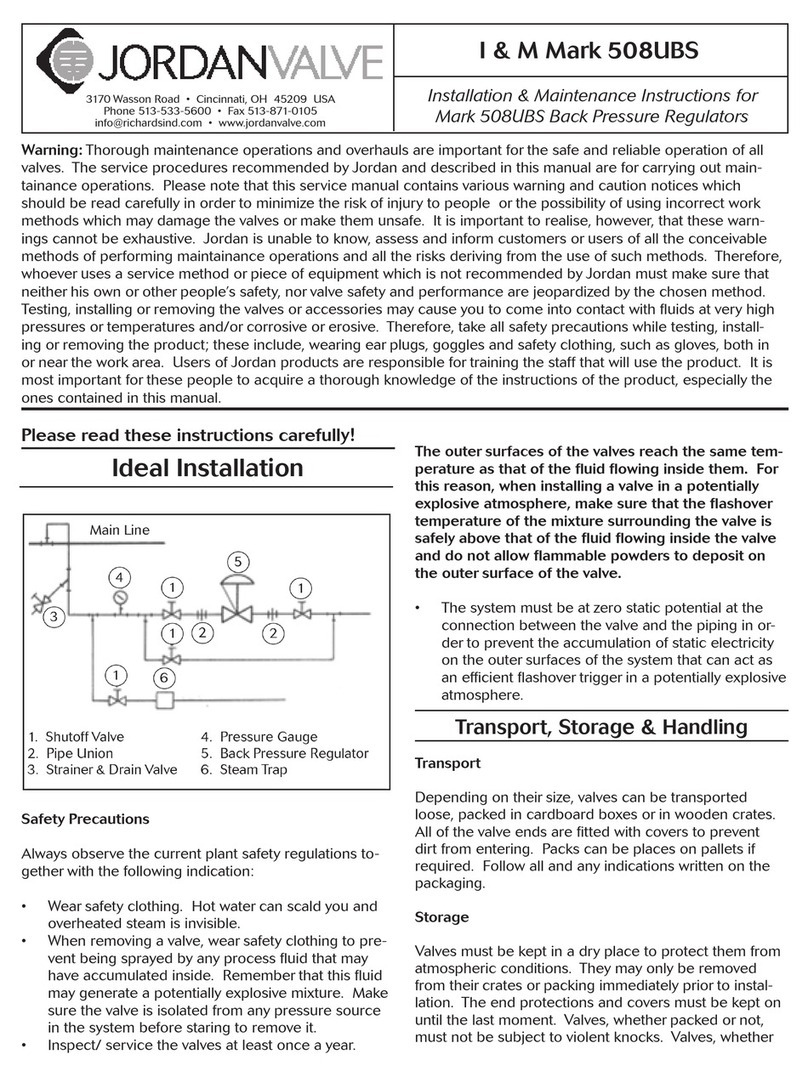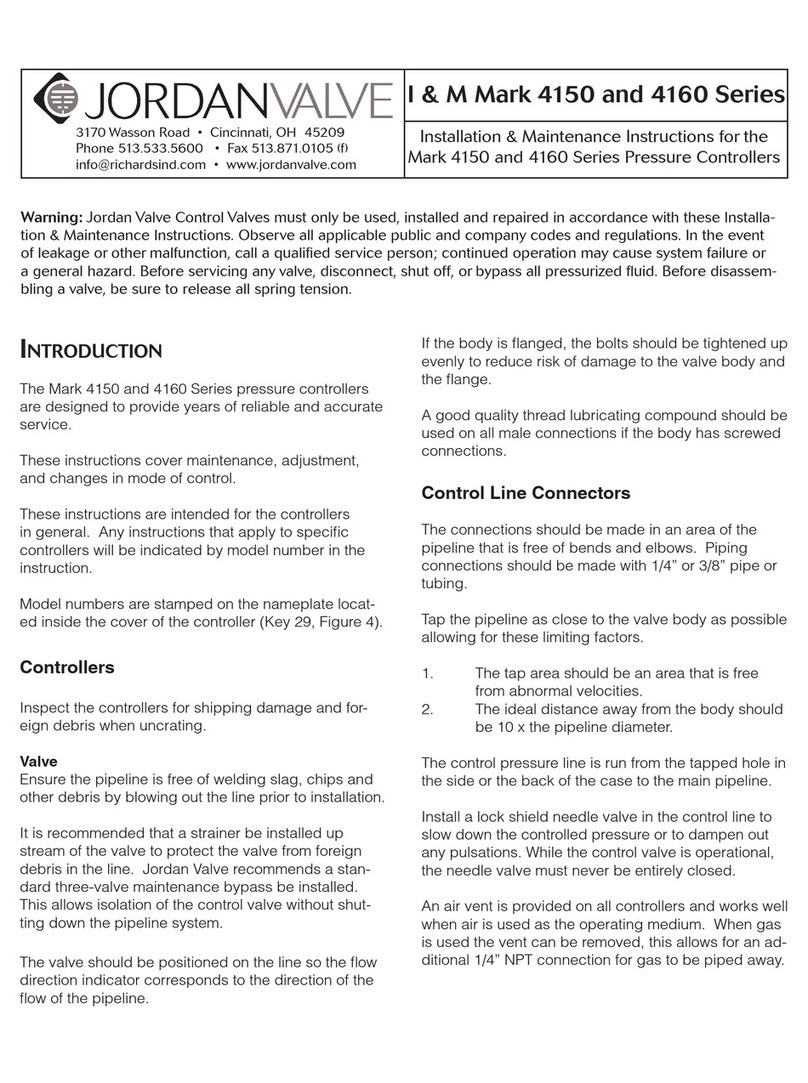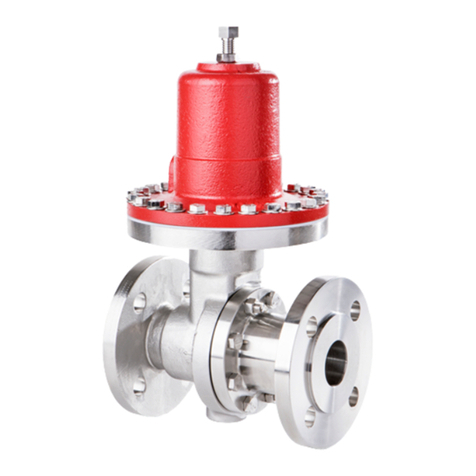
-2-
Clean-In-Place
To open the valve to open for cleaning, unscrew one of
the handles (43) from the adjusting block (28) and screw
it into the cam (30). Pull the handle (43) down and
towards you without rotating the adjusting block (28).
Secure the cam in the open position (see detail on back
page) with the ¼” self locking pin (39). This will unseat
the plug and allow cleaning media to freely flow through
the valve. When cleaning is complete, remove the ¼”
self locking pin (39) and raise the handle (43) straight up
without rotating the adjusting block (28). Remove handle
(43) from cam (30) and screw it back into the adjusting
block (28).
Note: when the cam lever is in the down position the
valve will not regulate!
Disassembling the Valve
1. Follow the instructions under the “Maintenance”
section to remove the valve from line.
2. Turn the adjusting block (28) counterclockwise to
remove the load from the range spring.
3. Remove the cam (30) by pulling out the 3/8” self
locking pin (38). Lift the adjusting block (28) off and
set aside. Remove HHCS (15) and set aside.
4. Remove the spring housing (42), spring guide (33),
bearings (35)(36), and spring (9). Set parts aside.
5. Remove the cam connector (41) by removing roll pin
(40). Remove cotter pin (25), flat washer (24), and
two belleville washers (23).
6. Remove set screw (27) unscrew bell (22). Lift bell
(22) and stem (19). Unscrew stem connector (26)
from valve stem (6). Remove lockwasher (10),
cylinder (17), spacer (12), and gland bushing(14).
7. Remove adapter plate (2), upper diaphragm plate
(4), diaphragm (11). Remove and discard o-ring (8),
remove lower diaphragm plate (5), remove and
discard o-ring (7).
CAUTION: If the valve is equipped with a metal
diaphragm, the edges are very sharp. Exercise caution
to avoid lacerations.
Preparing Valve For Assembly
All parts should be cleaned and examined. Damaged
parts should be replaced.
Note: For all assembly lubrication requirements, follow
instructions for soft seated valves that meet the following
conditions:
• If you are working on a valve that was purchased
after 9/17/2018.
• If you are installing a repair kit for a valve that was
purchased after 9/17/2018, and a part number in
that repair kit has a model suffix of -SLFLK, -SFLK, or
-SLK.
New Loctite Instructions for valves that meet the above
conditions:
• Loctite is no longer required for wetted stem com-
ponent assembly. It can still be used, but its use will
make future stem disassembly more difficult.
For valves or parts that don’t meet the above condi- tions
use the following instructions:
For valves or parts that don’t meet the above conditions
use the following instructions:
Clean threads on the stem and on retainer with Loctite
primer 7649. Follow Loctite’s instructions for primer and
sealant. Install new soft seat onto retainer (or onto stem
when applicable on low flow versions). Apply Loctite
Sealant 2046 to threads and thread the retainer onto the
stem. Tighten until the screw threads run out. Allow to
cure.
Assembling the Valve
1-1/2”-3”
1. Lubricate o-ring and install into the groove in the
body (1) (not required with an elastomer diaphragm).
2. Lubricate o-ring (7) and install into the groove in the
lower diaphragm plate (5).
3. Install lower diaphragm plate (5) onto stem (6)
4. Install o-ring (8) onto lower diaphragm plate (5).
Install diaphragm (11) onto stem (6). Install upper
diaphragm plate (4) onto stem.
5. Install gland bushing (14) into guide bushing (18).
6. Install stem (6) into the body (1). Center diaphragm
onto body. [When using the ultra-thin Jorlon
diaphragm, install Gylon gasket centered over
diaphragm.]
7. Install adapter (2) onto the body (1). The adapter (2)
should engage the pilot diameter on the body (1)
and the drain slot should be over the inlet.
8. Install spacer (12) and cylinder (17) on to the stem
(6).
9. Install lock-washer (10) on to stem (not required with
an elastomer diaphragm).
10. Install stem connector (26) on to stem and tighten. If
elastomer diaphragm, tighten only ¼ turn and apply
Loctite No. 290 to the threads to lock the joint.
11. Install lift lever stem (19) into bell (22). Screw bell
(22) on to stem connector (26). Secure bell (22) with
CPSS (27).
